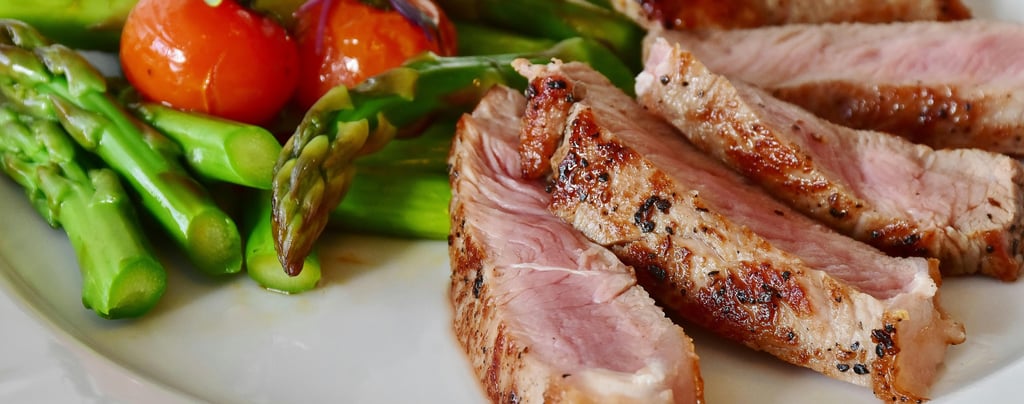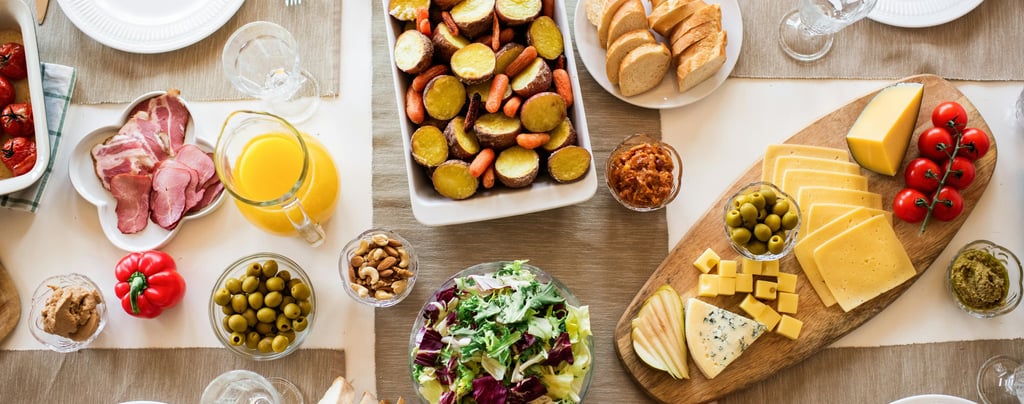Canada Travel Guide 3: Must-Try Canadian Foods – A Culinary Journey Through Canada
Canada Travel Guide,Canada's food culture is a rich tapestry that reflects the country's diverse history, geography, and multicultural influences. From the Pacific Coast to the Atlantic shores, and from the vibrant cities to the serene countryside
1/11/20258 min read


Introduction to Canadian Culinary Treasures
Canada's food culture is a rich tapestry that reflects the country's diverse history, geography, and multicultural influences. From the Pacific Coast to the Atlantic shores, and from the vibrant cities to the serene countryside, each region of Canada offers unique culinary treasures that tell a story of the land and its people. The culinary landscape of Canada is shaped by a variety of factors, including its indigenous heritage, the waves of immigrants who have settled throughout its history, and the bounty of natural resources available across its vast expanse.
One cannot discuss Canadian cuisine without acknowledging the significant role of indigenous foods. First Nations communities have long utilized traditional ingredients such as wild game, fish, berries, and plants, cultivating a deep connection to the land. This profound respect for nature and sustainable practices is an integral part of the Canadian food philosophy. The melding of indigenous traditions with European and Asian culinary techniques has led to innovative and distinct dishes that highlight Canada's multicultural identity.
In addition to its indigenous influences, Canada's geographical diversity plays a crucial role in shaping its culinary practices. The country's abundant natural resources, including fresh seafood from the Atlantic and Pacific Oceans, fertile agricultural lands in the Prairie provinces, and an array of fresh produce from the temperate climates, contribute to a vibrant and varied food scene. From poutine in Quebec to butter tarts in Ontario, each province offers its specialities that showcase local ingredients and cultural influences.
As we embark on this culinary journey through Canada, we will explore must-try Canadian foods that epitomize the nation’s diverse palate. Each dish is not merely a meal; it is a reflection of the region's history and the rich multicultural influences that continue to shape Canadian cuisine today. This exploration is not only a delight for the taste buds but also an enlightening experience into Canada’s cultural heritage.
Poutine: A Quebec Classic
Poutine, a renowned dish with deep connections to Quebec culinary culture, has garnered fame across Canada and beyond. This beloved comfort food is primarily composed of three core ingredients: crispy French fries, rich gravy, and fresh cheese curds. Each component plays a significant role in creating the harmonious blend of textures and flavors that defines poutine.
The origins of poutine are somewhat debated, with claims of its creation dating back to the late 1950s in rural Quebec. Initially, poutine emerged as a humble dish served in roadside diners and small eateries, but its popularity surged as Canadians discovered and embraced its delightful combination of indulgent flavors. This evolution has led to numerous interpretations and adaptations, making poutine a reflection of local tastes and preferences.
Over the years, poutine has experienced several creative variations, prompting chefs to experiment with flavors and ingredients. For instance, some may opt for gourmet versions featuring toppings such as pulled pork, sautéed mushrooms, or even truffle oil. Furthermore, certain regions have distinct takes on poutine; for example, in Alberta, one might encounter a spicy variant infused with jalapeños and chipotle sauce. Regardless of the version, the essence of poutine remains untouched, delivering a satisfying experience that appeals to a wide audience.
When venturing across Canada, one can find authentic poutine in various establishments, ranging from food trucks to fine-dining restaurants. In Quebec City, La Banquise is a well-known destination offering an extensive selection of poutine, while Toronto’s Smoke's Poutinerie has gained a reputation for its extensive menu featuring creative combinations. Indulging in a serving of genuine poutine is not just a culinary experience; it is a cultural journey that captures the heart of Canadian comfort food.
Maple Syrup Treats: A Sweet Canadian Tradition
Maple syrup holds a special place in Canadian culture and cuisine, representing not only a cherished sweetener but also a time-honored tradition. The process of producing maple syrup begins in early spring when temperatures rise above freezing during the day and drop below freezing at night. This fluctuation causes sap to flow from the maple trees. Tapping these trees involves drilling a small hole into the trunk, into which a spout is inserted to collect the sap. It takes approximately 40 liters of sap to produce just one liter of pure maple syrup, highlighting the dedication required for this sweet product.
Canadian cuisine showcases an impressive variety of maple syrup-based treats that delight locals and visitors alike. One of the most indulgent creations is maple taffy, known as “tire d’érable” in French. It is made by pouring boiling maple syrup over snow, which instantly cools it and transforms the syrup into a chewy candy. Maple cookies, another beloved treat, come in various forms, featuring maple-flavored filling sandwiched between two crisp cookies. These snacks exemplify the versatility of maple syrup, which can also enhance savory dishes such as glazes for meats or dressings for salads.
Throughout Canada, numerous festivals celebrate this iconic syrup, such as the Festival de la Cabane à Sucre in Quebec, where visitors can indulge in maple-themed food and activities while learning about the syrup-making process. Many sugar shacks offer tastings and tours, providing an immersive experience for those eager to explore the world of maple syrup. Whether enjoyed in its liquid form or as a key ingredient in tasty treats, maple syrup is undeniably a sweet Canadian tradition, inviting both locals and tourists to savor its rich flavors.
Atlantic Lobster: The Taste of the East Coast
Atlantic lobster, a hallmark of Canada's maritime provinces, epitomizes the region's culinary heritage. Harvested primarily from the cold, nutrient-rich waters of the North Atlantic Ocean, these crustaceans are not only a delicacy but also a vital industry for the coastal communities. The lobster fishing season typically spans from late spring to early summer, with the most abundant catches occurring from June to December. This seasonal rhythm is crucial for ensuring sustainable harvesting practices, which is a central focus of the Canadian fishing industry.
The primary method of harvesting Atlantic lobster involves the use of traps, carefully designed to minimize the impact on the marine ecosystem while maximizing the catch. Fishermen deploy these traps, typically made of wood and wire, along the ocean floor, using bait to attract lobsters. Once caught, the lobsters are kept alive until they reach shore, ensuring freshness that is paramount in maintaining the highest quality of taste. The demand for this seafood, both locally and globally, underscores its significance to Canada's economy and cultural identity.
In terms of preparation, Atlantic lobster offers a myriad of culinary possibilities. From the classic boiled or steamed versions served with melted butter to more intricate recipes such as lobster rolls or bisques, the flavors of this seafood are celebrated across Canada. Locals often recommend visiting iconic lobster shacks bordering the coast, where one can savor a fresh lobster roll in a casual setting. Renowned restaurants also offer gourmet takes on lobster, pairing it with various regional ingredients to create unique dining experiences. Whether enjoyed at a seaside patio or a fine dining establishment, Atlantic lobster undoubtedly represents the quintessential taste of Canada's East Coast.
Alberta Beef: A Cut Above the Rest
Alberta beef is often lauded as one of the finest grades of beef in Canada, known for its exceptional quality, flavor, and tenderness. The region boasts a rich agricultural heritage, where cattle are raised on vast pastures that allow them to graze freely on nutrient-rich grasses. This natural diet is a key factor in developing the beef's remarkable taste and texture. Alberta's favorable climate and land conditions provide an ideal environment for ranching, contributing to the high standards of livestock management and farming practices.
The Alberta beef industry emphasizes sustainable and ethical farming practices, prioritizing animal welfare and environmental stewardship. Farmers implement rigorous breeding practices to ensure the production of high-quality beef. The emphasis on raised cattle, primarily across the open ranges of Alberta, results in marbled cuts that are both juicy and flavorful. The attention to detail in the rearing process is reflected in the variety of available cuts, each offering its distinct culinary experience. Popular cuts include tenderloin, ribeye, sirloin, and flank steak, each suitable for different cooking methods and occasions.
Alberta beef can be enjoyed in a multitude of ways, making it a versatile addition to any meal. For casual gatherings, barbecuing steaks over an open flame brings out the beef's natural flavor while providing a smoky richness. Alternatively, for a gourmet dining experience, consider preparing a slow-cooked beef stew or a perfectly seared filet mignon accompanied by seasonal vegetables. Regardless of the preparation method, Alberta beef ensures a memorable dining experience, rich with flavor and tradition. Its reputation continues to grow, making Alberta a must-visit destination for culinary enthusiasts eager to experience the best of Canadian cuisine through its prized beef offerings.
Ice Wine: Canada’s Liquid Gold
Ice wine is a remarkable Canadian delicacy that showcases the artistry and ingenuity of Canadian winemakers. This exquisite beverage is crafted using grapes that have naturally frozen on the vine, a process that occurs in the region’s colder climates, primarily in areas such as Niagara Peninsula in Ontario and parts of British Columbia. The freezing of the grapes concentrates the sugars and flavors, resulting in a sweet and luscious wine that has gained international acclaim.
The production of ice wine is labor-intensive and requires precise timing and patience. Winemakers must wait for the temperatures to drop, typically reaching around -8 to -10 degrees Celsius, to harvest the frozen grapes. The grapes are handpicked in the early morning while still frozen, ensuring that the juice extracted during pressing remains concentrated. This meticulous process translates into a product that boasts vibrant flavors, often characterized by notes of apricot, peach, and honey, with a rich, velvety texture and balanced acidity.
Ice wine can be enjoyed on its own or paired with a variety of dishes, enhancing gastronomic experiences. It complements desserts wonderfully, making it a popular pairing with cheese, particularly bleu cheese or rich, creamy desserts like panna cotta. Additionally, it can elevate savory dishes such as foie gras or spicy Asian cuisine, providing a delightful contrast to the meal's flavors. Visitors to Canada should not miss the opportunity to explore winery tours in regions renowned for ice wine production, where they can sample this liquid gold directly from the source, gaining insights into the winemaking process and its significance to Canadian culture.
Conclusion: Savoring Canada’s Culinary Diversity
Embarking on a culinary journey through Canada is not merely about indulging in food; it is a profound exploration of the country’s rich and diverse cultural tapestry. Each dish, from the comforting poutine to the exquisite tourtière, tells a story of the people, traditions, and histories that have shaped the nation. Canadian cuisine reflects the influence of Indigenous peoples, early European settlers, and immigrant communities, making it a unique amalgamation of flavors, techniques, and ingredients.
Experiencing Canadian food is an essential part of truly appreciating the country's cultural diversity. In cities and rural areas alike, local markets and restaurants are hubs of culinary creativity where traditional recipes are lovingly preserved and innovative dishes are born. This culinary landscape provides not only a taste of the region's bounty but also a glimpse into the everyday lives of Canadians. By savoring local delicacies and engaging with chefs and artisans, travelers can gain a deeper understanding of the cultural narratives that define Canada.
Furthermore, food festivals and cultural events present an excellent opportunity to experience the vibrancy of Canada’s gastronomy. These gatherings showcase regional specialties, artisanal products, and flavors that resonate with the communities they come from. As you navigate through this diverse culinary landscape, you will likely find that each meal is an invitation to discover more—about the ingredients, the cooking methods, and, ultimately, the people behind them.
We encourage you to take this opportunity to explore the vast array of Canadian foods as part of your travels across the country. The culinary experiences you gain will not only fill your stomach but will enrich your understanding of Canada as a nation. To stay updated on more travel tips and culinary guides, be sure to follow our blog for insights that will enhance your Canadian adventure.










Explore
Inspire your wellness journey while traveling the globe.
Wellness
Travel
+1234567890
© 2024. All rights reserved.
